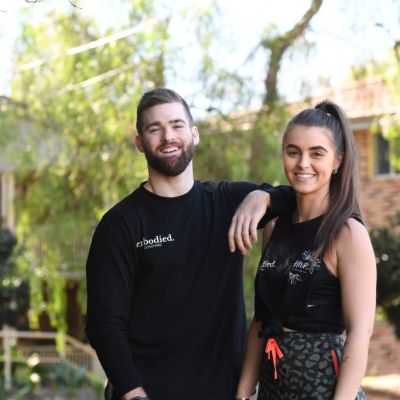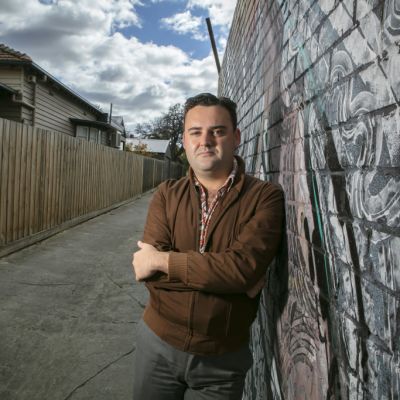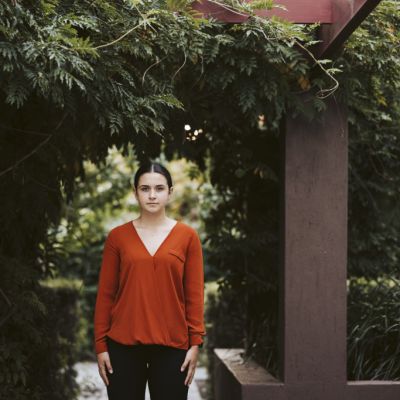The cost of renting a house in Australia is now more expensive than ever

The cost of renting a house in Australia has reached record levels with prices rising in almost every corner of Australia since the pandemic, new data reveals.
The latest Domain Rent Report, released on Thursday, shows the median rental asking price for house rents has soared nationally to a high of $471 per week – up 4 per cent in the year to March 2021.
The country’s rental market has made a “remarkable” recovery, experts say: rents have continued to climb since last year as the rise of tree-changers and working from home during the pandemic pushed tenants to all corners of the country.
The tide has turned in several smaller cities too, recording massive jumps in rents after years of flat growth.
But there is one exception. Melbourne, which endured the toughest coronavirus lockdowns of 2020, is on track to become the cheapest capital city to rent in the nation.
Both its house and unit rent prices have declined over the past 12 months, with the largest falls driven mainly by plunging unit rents in inner-city locations. House rents are also declining and likely to fall further, Domain’s senior research analyst Nicola Powell said.
“Tightening rental conditions in Adelaide and Perth could push rents higher than Melbourne in the coming months, which would make Melbourne the most affordable city [in which] to rent,” she said.
 Two-speed rental market: Tenants offer up to $100 more a week to secure properties as moratoriums lift
Two-speed rental market: Tenants offer up to $100 more a week to secure properties as moratoriums lift Sydney house rents at record high, unit rents stabilising after COVID price declines
Sydney house rents at record high, unit rents stabilising after COVID price declines Melbourne set to become the cheapest city in which to rent a home: Domain Rent Report
Melbourne set to become the cheapest city in which to rent a home: Domain Rent Report The cost of renting in Brisbane reaches record levels, outstrips Melbourne prices
The cost of renting in Brisbane reaches record levels, outstrips Melbourne prices Canberra house and unit rents hit record high, still the most expensive city in the nation: Domain rent report
Canberra house and unit rents hit record high, still the most expensive city in the nation: Domain rent report
Perth house rents recorded a whopping 14.7 per cent rise to a median of $430 – the highest asking rents since 2015.
In Darwin, house rents jumped 14.6 per cent to $550 – the highest asking rents since 2017.
Dr Powell said with international borders still closed and overseas migration at a near-standstill, the recovery was “remarkable”.
“It’s quite astounding,” she said.
Subdued investor activity over the past year meant there was less rental stock to choose from and now the moratorium on rental hikes and evictions was lifted, many tenants were experiencing an increase in rents that were at “below market rates” last year, she said.
| Capital City | Mar-21 | QoQ | YoY |
| Sydney | $550 | 0.0% | 3.8% |
| Melbourne | $430 | -2.3% | -2.3% |
| Brisbane | $440 | 3.5% | 7.3% |
| Adelaide | $425 | 3.7% | 7.6% |
| Perth | $430 | 3.6% | 14.7% |
| Canberra | $600 | 0.0% | 3.4% |
| Darwin | $550 | 0.0% | 14.6% |
| Hobart | $480 | 4.3% | 2.1% |
| National | $471 | 0.6% | 4.0% |
| Source: Domain Rent Report, March Quarter 2021 | |||
Adelaide house rents jumped 7.6 per cent to a record $425 per week in the same 12-month period.
Brisbane house rents also recorded a similar rise of 7.3 per cent to a record of $440 per week.
Rental rises were tipped to grow, Dr Powell said, as more landlords adjusted asking rents to make up for the pandemic last year.
“We’re probably going to see some hefty increases in rents and part of it is filtering through in this quarter but also the next quarter we’ll see some more changes in rents.”
This was evident in Hobart where house rents in the first quarter of 2021 jumped 4.3 per cent already outpacing growth over the past 12 months to a new record of $480 per week.
The rate of growth was concerning, Dr Powell said, given that international factors had not returned to normal yet.
“If we’re seeing record high rents in many of our cities now, what is this going to mean when our international borders re-open and we welcome back foreign students numbers and overseas migrants? The pressure that will place on our rental market will be fairly great,” Dr Powell said
| Capital City | Mar-21 | QoQ | YoY |
| Sydney | $470 | 0.0% | -9.6% |
| Melbourne | $375 | -2.6% | -12.8% |
| Brisbane | $400 | 0.0% | 3.9% |
| Adelaide | $350 | 2.9% | 9.4% |
| Perth | $365 | 4.3% | 14.1% |
| Canberra | $500 | 1.0% | 4.2% |
| Darwin | $430 | 2.4% | 13.2% |
| Hobart | $420 | 5.0% | 0.0% |
| National | $429 | -0.4% | -8.1% |
| Source: Domain Rent Report, March Quarter 2021 | |||
Nationally, the cost of renting has declined significantly. The national median for unit rents fell 8.1 per cent in the past year to March 2021 to $429 per week, returning to 2013 levels.
But that drop is being driven by our two largest capital cities, where the cost of renting units has plunged back to 2013 levels in Sydney and 2015 levels in Melbourne.
In every other capital city, rent prices for units are either stable or increasing, particularly in cities like Perth, Darwin, Adelaide and Brisbane.
Sydney and Melbourne’s inner-city unit markets, usually teeming with international students, have suffered the most, as well as other inner-city suburbs that have previously been sought after for their proximity to the CBD.
“Working remotely has been largely accepted. It’s become the norm, so I think for tenants they can move further afield. We have seen that shift in tenants,” Dr Powell said, adding that it was here to stay.
“Really, the only weak points are units in Sydney and Melbourne,” Dr Powell said. “The closer you get to the CBD, the weaker the rental market and that’s because there’s a higher proportion of rentals in these CBD areas.”
We recommend
We thought you might like
States
Capital Cities
Capital Cities - Rentals
Popular Areas
Allhomes
More







